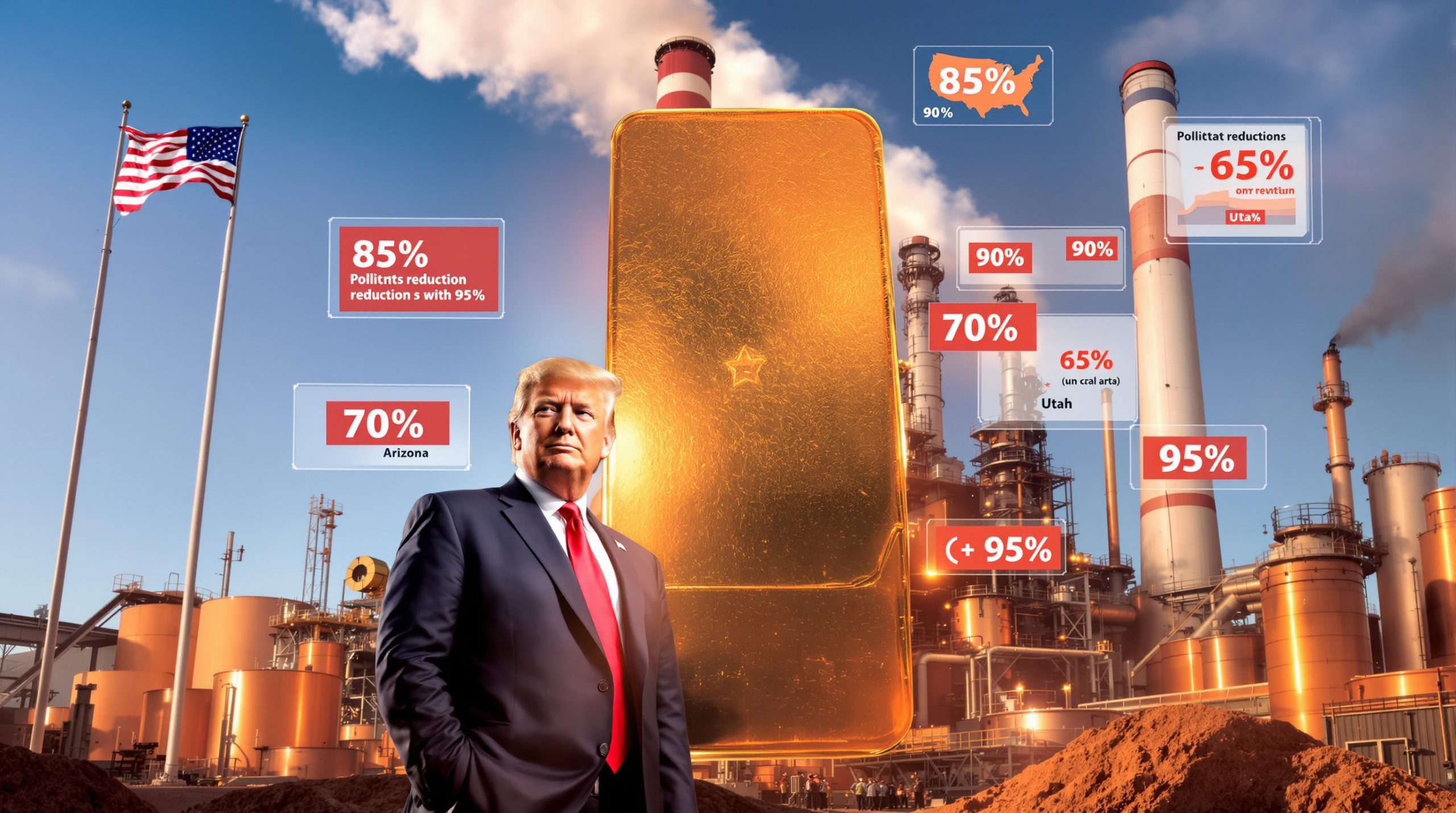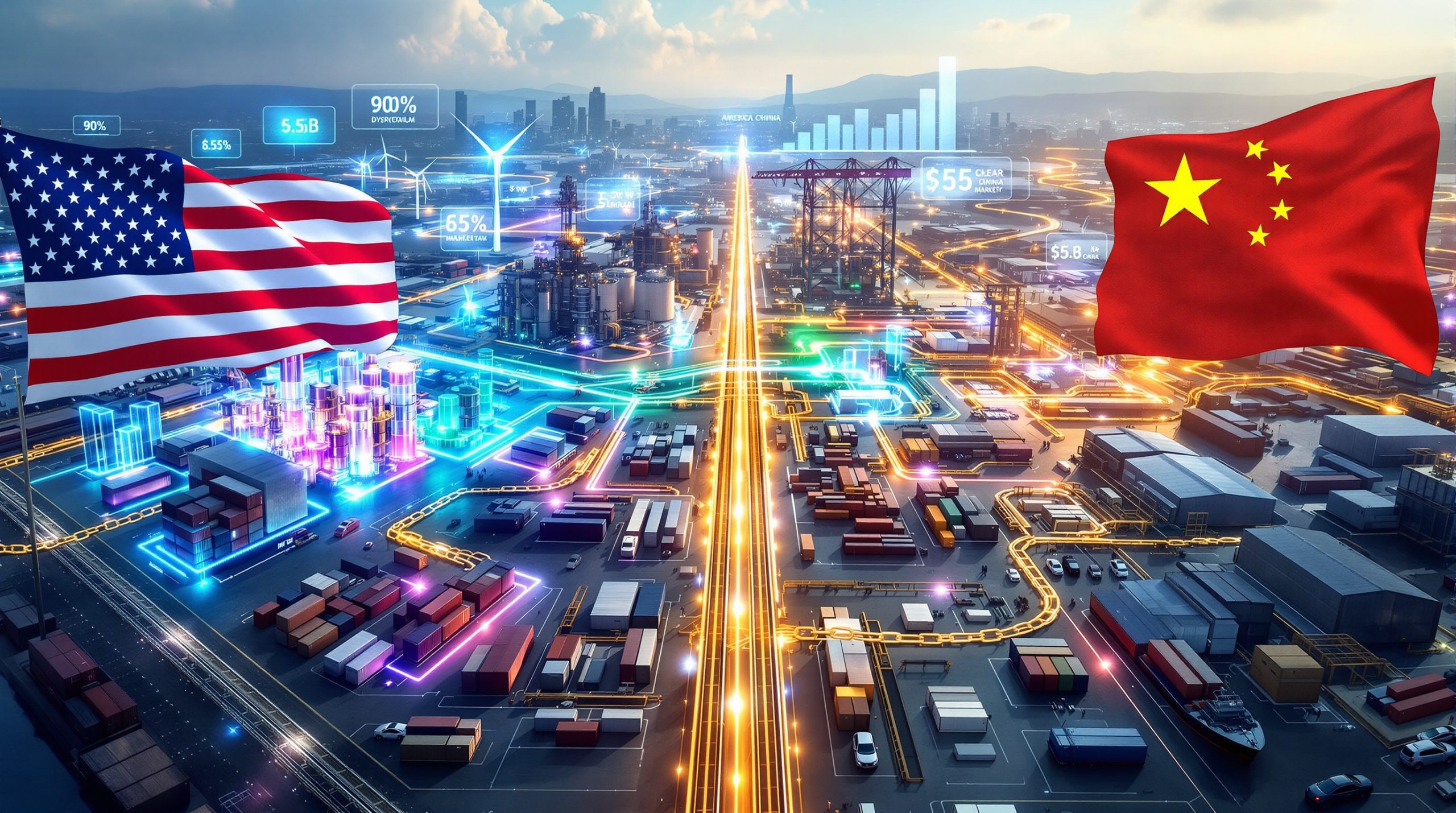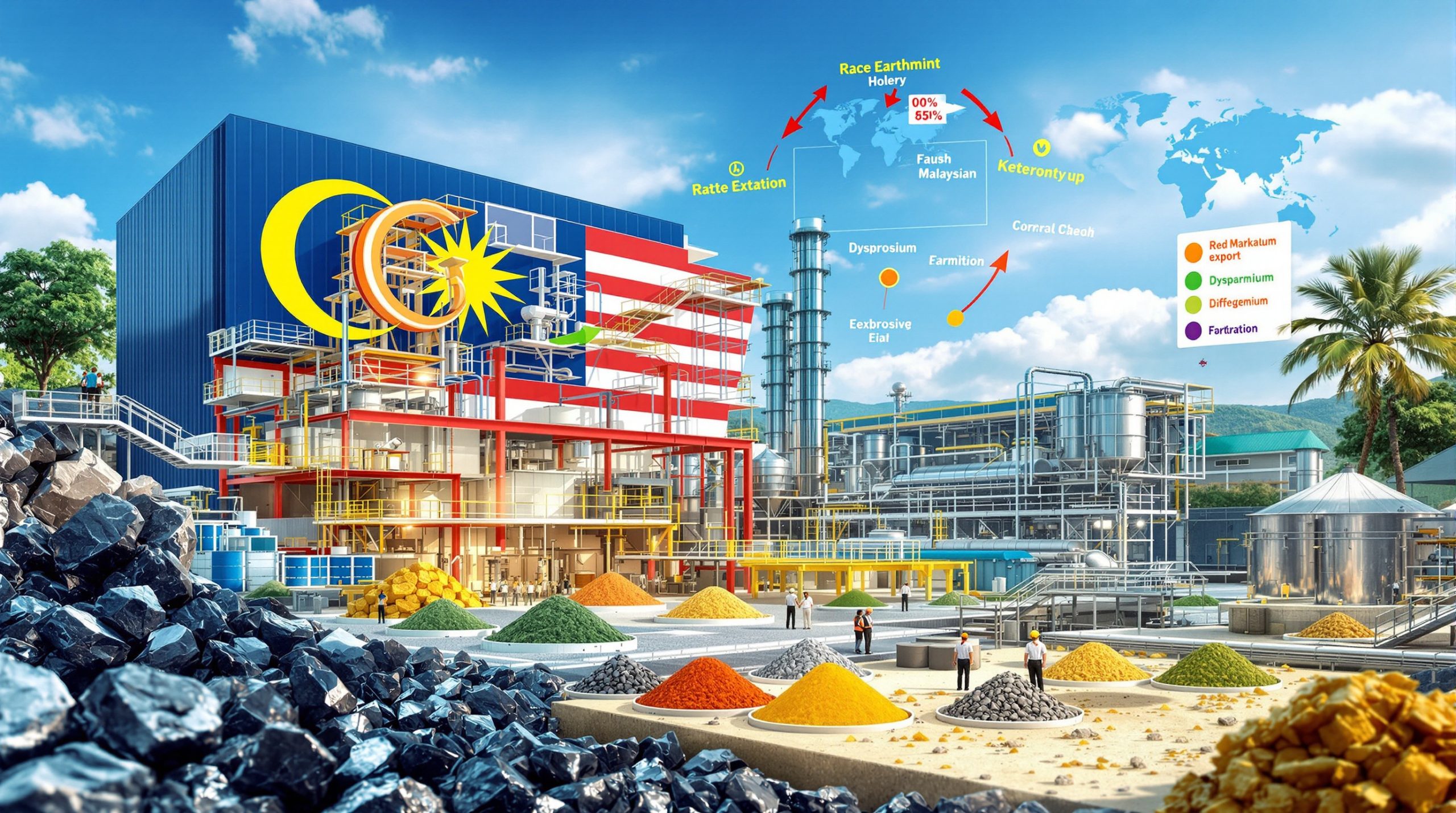Why is US Antimony Restarting its Mexico Operations?
The Strategic Importance of the Madero Smelter Restart
US Antimony Corporation has made a decisive move to resume operations at its Madero smelter plant in Mexico after over a year of inactivity. This strategic restart comes at a critical juncture in the global antimony market insights, with the first shipments of antimony ore from international sources already being processed at the facility.
The company's timing is significant, as it positions itself to capitalize on severe market disruptions. After lying dormant for 14 months between March 2024 and May 2025, the Madero facility is now ramping up with second and third shipments expected to arrive at the facility starting next week, according to company statements.
US Antimony has set an ambitious production target of approximately 200 tons of antimony per month by the end of 2025, which translates to a potential annual capacity of 2,400 tons. This output would represent roughly 8% of current US antimony demand, making it a meaningful contribution to domestic supply security.
"The geopolitical landscape necessitated rapid reintegration of our idled assets," noted US Antimony CEO John Lawrence in a recent shareholder communication. "What was once a financial liability has transformed into a strategic asset almost overnight."
Geopolitical Factors Driving the Decision
The primary catalyst behind US Antimony's dramatic reversal in strategy was China's December 2024 export ban on critical minerals to the United States, which explicitly included antimony among other strategic materials. This move sent shockwaves through supply chains and caused antimony prices to surge from approximately $8,200 per ton in early 2024 to over $18,000 per ton post-ban.
The ban represents the latest escalation in trade tensions between the world's two largest economies, with critical minerals becoming a key battleground. China's dominance in antimony production—accounting for nearly 48% of global output in 2023—left the United States particularly vulnerable to such restrictions.
President Trump's administration has responded with a renewed push to boost domestic production of critical minerals, reinforcing Executive Order 13817 which designated antimony as a critical mineral essential to economic and national security. The Madero smelter restart aligns perfectly with this policy directive.
"China's export restrictions forced a reevaluation of hemispheric supply chains," noted a recent US Department of Commerce statement, underscoring the growing consensus that North American production capacity must increase to offset China's near-total control of the antimony sector.
What is Antimony and Why Does it Matter?
Critical Applications of Antimony
Antimony (chemical symbol Sb) is a silvery-white metalloid that most consumers never see in its pure form, yet it plays an indispensable role in numerous critical applications. Its unique properties make it virtually irreplaceable in several defense and energy technologies.
In military applications, antimony compounds are essential components in ammunition primers, with 100% of US antimony for munitions primers coming from foreign sources until recently. The metalloid is also crucial in infrared missiles, nuclear weapons, and night-vision goggles, where its thermal stability properties cannot be easily substituted.
"Antimony's thermal stability makes it irreplaceable in defense systems," explains Dr. Emily Tran, materials scientist at MIT. "The antimony trioxide (Sb₂O₃) used in ammunition primers chemically reduces ignition friction in a way few other compounds can match efficiently."
In the energy sector, antimony is increasingly vital for next-generation batteries and photovoltaic equipment. In solar applications, antimony enhances silicon cell conductivity at 0.5–1.2% doping levels, significantly improving energy conversion efficiency in certain cell designs.
The M1 Abrams tank, the backbone of US armored divisions, relies heavily on antimony-based infrared optical systems—highlighting how deeply embedded this mineral is in national security infrastructure.
Global Supply Chain Dynamics
China produced almost half of the global antimony supply in 2023, with Chinese mines accounting for approximately 48% of worldwide production. This dominance extends further when considering that Chinese companies control significant mining operations in other countries as well.
Global antimony reserves present an even more concentrated picture, with China holding approximately 52% of known reserves while the US controls merely 3%, according to the latest USGS assessments.
The December 2024 export restrictions triggered unprecedented price volatility, with antimony prices soaring by over 120% within six weeks of the announcement. This dramatic price action revealed just how vulnerable global supply chains had become to Chinese policy decisions.
For US defense contractors and energy technology manufacturers, the disruption created immediate challenges, as many had no substantial inventory buffers due to just-in-time manufacturing practices adopted over the previous decade.
How Does This Reversal Compare to Previous Business Decisions?
The 2024 Latin American Exit Strategy
In March 2024, US Antimony announced a strategic retreat, declaring its intention to discontinue all operational activities in Latin America. The company had cited negative cash flow and unsustainably low antimony prices (around $8,200 per ton at the time) as the primary reasons for this decision.
The exit strategy included plans to sell its Mexican subsidiary, which included the Madero smelter facility. This decision came after a comprehensive financial performance review that suggested the Latin American operations were a net drain on corporate resources.
SEC filings from Q1 2024 revealed operating losses exceeding $3.2 million from the Mexican operations alone, with maintenance costs of the idled facility continuing to burden the company's balance sheet throughout most of 2024.
The Strategic Pivot
The company's sudden reversal represents a complete 180-degree shift from its previously announced divestment strategy. An analyst note from Goldman Sachs observed that "The 180° pivot reflects extreme market dislocation and fundamentally altered economics for North American antimony production."
This strategic shift required a capital expenditure of approximately $12 million for facility retrofitting and modernization, according to US Antimony's restart announcement. The investment includes environmental compliance upgrades to meet both Mexican and US regulatory standards.
The company's decision aligns with broader geopolitical market strategies, which has increasingly emphasized reshoring critical mineral production capacity. The timing coincides with expanded loan guarantee programs from the Department of Energy specifically targeting critical mineral projects.
US Antimony's pivot is reminiscent of Albemarle's 2024 lithium strategy adjustment, where mothballed assets were rapidly reactivated in response to shifting market dynamics and government incentives.
What Are the Market Implications of the Restart?
Supply Chain Resilience
The restart of the Madero smelter represents a significant step toward reducing US dependency on Chinese antimony. While the facility's projected output of 2,400 tons annually represents only about 8% of total US demand (approximately 30,000 tons per year), it establishes an important foothold for North American production capacity.
According to models developed by the International Trade Administration, "Each ton of domestic antimony reduces supply chain risk by 4.7%" for critical defense applications. The Madero facility thus contributes meaningfully to overall supply chain security despite its relatively modest output compared to global production.
More importantly, the restart demonstrates the technical feasibility of antimony processing outside Chinese control, potentially encouraging additional investment in the sector. By maintaining operational expertise in antimony metallurgy and processing, the facility serves as a knowledge repository that could support sector expansion.
Through the USMCA (United States-Mexico-Canada Agreement), the Madero operation saves approximately $2.4 million monthly in tariff avoidance compared to non-North American imports, creating a sustainable economic advantage.
Economic Impact
Beyond its strategic importance, the Madero restart brings tangible economic benefits to the region. The facility is expected to create approximately 150 direct jobs at full operation, with an additional 300-400 indirect jobs in the supply chain and supporting services.
The investment in processing infrastructure includes modernized pyrometallurgical smelting equipment that significantly improves energy efficiency compared to the facility's previous configuration. This modernization represents a technology transfer that enhances Mexico's industrial capabilities.
The development of international ore supply relationships is particularly noteworthy, as US Antimony has secured agreements with mines in Bolivia, Guatemala, and Turkey—diversifying its supply sources in a way that no single disruption could halt production.
This international sourcing strategy creates flexibility that wasn't present in previous operational iterations, where the facility relied heavily on Mexican ores with inconsistent quality and availability.
Regulatory and Environmental Considerations
Compliance Challenges
The restart of the Madero facility faced significant regulatory hurdles before operations could resume. Mexican environmental regulations have tightened considerably since the facility was originally constructed, requiring substantial upgrades to emissions control systems.
The company invested approximately $4.2 million in a state-of-the-art gas scrubbing system that reduces sulfur dioxide emissions by over 95% compared to the previous operation. This environmental upgrade was mandatory to secure permit #MX-EPA-2025-0083 from Mexican authorities.
Additionally, meeting USMCA certification requirements involved demonstrating compliance with labor standards under the agreement's Chapter 23 provisions. This necessitated new agreements with the Sindicato Nacional de Mineros, Mexico's primary mining union.
Sustainability Initiatives
Beyond compliance, US Antimony has implemented several forward-looking sustainability measures at the Madero facility. A closed-loop water recycling system reduces freshwater consumption by 82% compared to conventional smelting operations.
The company has also established a slag recovery program that processes historical waste to recover residual antimony, simultaneously remediating legacy environmental issues while generating additional revenue streams.
These initiatives position the Madero operation as a model for sustainable metallurgical processing in North America, potentially establishing standards for future ESG challenges in mining projects.
FAQ: US Antimony's Mexico Operations
When did US Antimony originally halt operations in Mexico?
US Antimony discontinued all operational activities in Latin America in March 2024, citing financial performance issues, negative cash flow, and low antimony prices at that time. The facility remained idle for approximately 14 months before the recent restart decision was implemented.
What production capacity is US Antimony targeting?
The company aims to produce approximately 200 tons of antimony per month from the Madero smelter prior to the end of 2025. This translates to an annual production capacity of roughly 2,400 tons, representing about 8% of current US antimony demand.
How has China's export policy affected the antimony market?
China banned exports of antimony to the US in December 2024, causing prices to soar from around $8,200 per ton to over $18,000 per ton within six weeks. This disruption severely impacted global supply chains, as China produced almost half of the global supply in 2023 and controls approximately 52% of known reserves.
What are the primary uses of antimony?
Antimony is widely used in military applications (ammunition primers, infrared missiles, nuclear weapons, night-vision goggles) where it is essentially irreplaceable. It also has critical applications in the energy sector, particularly in specialized batteries and photovoltaic equipment. Additionally, approximately 60% of antimony is used in flame retardants for consumer and industrial products.
How does this restart align with US minerals policy?
The restart aligns directly with President Trump's push to boost domestic production of critical minerals to reduce dependency on China's near-total control of the sector. It supports the objectives outlined in Executive Order 13817, which identified antimony as a critical mineral essential to US economic and national security, further highlighting the importance of the critical minerals race between major world powers.
Disclaimer: This article contains forward-looking statements regarding production targets, market conditions, and strategic initiatives. Actual results may differ materially from projections due to various factors including market volatility, regulatory changes, and operational challenges. Readers should conduct their own due diligence before making investment decisions based on this information.
Looking to Capitalize on the Next Major Mineral Discovery?
Stay ahead of market disruptions like the antimony crisis with Discovery Alert's proprietary Discovery IQ model, which instantly notifies investors about significant ASX mineral discoveries and turns complex data into actionable insights. Visit our dedicated discoveries page to understand how historic mineral finds have generated substantial returns for early investors.




